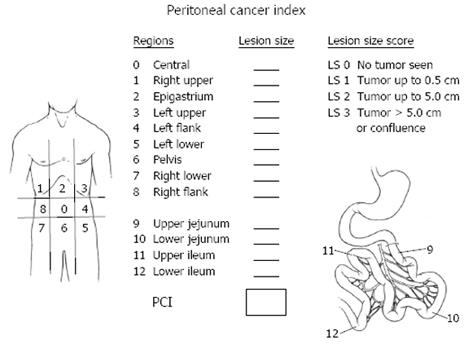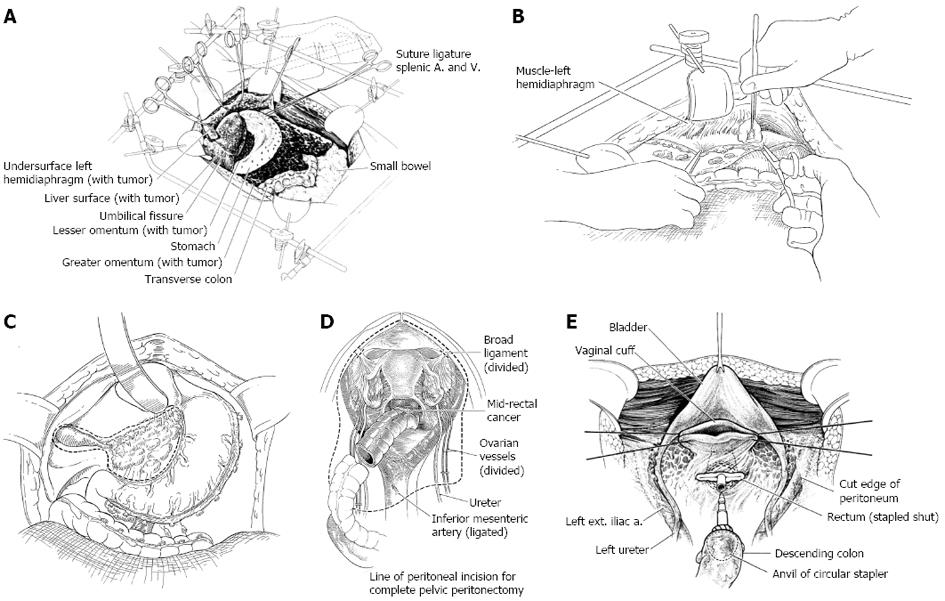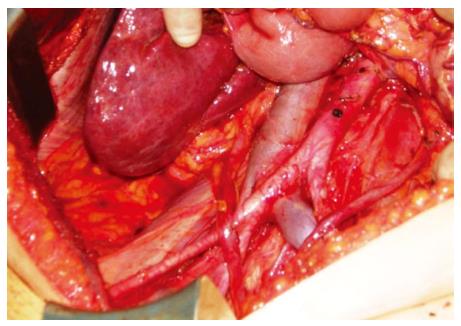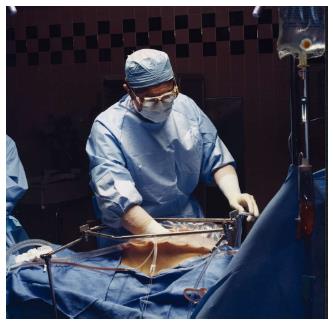Copyright
©2013 Baishideng Publishing Group Co.
World J Obstet Gynecol. Nov 10, 2013; 2(4): 108-115
Published online Nov 10, 2013. doi: 10.5317/wjog.v2.i4.108
Published online Nov 10, 2013. doi: 10.5317/wjog.v2.i4.108
Figure 1 The peritoneal cancer index uses the distribution of cancer implants throughout the abdomen and pelvis combined with a lesion size of these nodules in order to quantitate the disease upon abdominal exploration.
PCI: Peritoneal cancer index.
Figure 2 Peritonectomy procedures.
A: A fixed retractor is used to provide exposure of the entire abdomen so that peritonectomy procedures on the anterior abdominal wall, beneath the hemidiaphragms, and within the pelvis can proceed in an efficient manner; B: Left upper quadrant peritonectomy; C: Cholecystectomy, lesser omentectomy and peritonectomy of the omental bursa; D: Rectosigmoid colon resection and complete pelvic peritonectomy; E: Reconstruction after rectosigmoid colon resection and complete pelvic peritonectomy. The vagina is closed prior to the hyperthermic intraperitoneal chemotherapy. The low stapled colorectal anastomosis is performed after the chemotherapy lavage is complete (all from Sugarbaker [19]).
Figure 3 Retroperitoneal space after pelvic and periaortic lymphadenectomy (from archives of Frigerio L).
Figure 4 Hyperthermic intraperitoneal chemotherapy proceeds by constructing a reservoir from the abdominal space.
The skin edges are elevated on a self-retaining retractor and a plastic sheet covers the open abdomen. A cruciate incision in this plastic sheet allows free access of the surgeon’s double-gloved hand. Uniform distribution of heat and chemotherapy is maintained throughout the 90 min of the Hyperthermic intraperitoneal chemotherapy treatment.
- Citation: Frigerio L, Ansaloni L, Poiasina E, Coccolini F, Sugarbaker PH. Comprehensive management of epithelial ovarian cancer with peritoneal metastases. World J Obstet Gynecol 2013; 2(4): 108-115
- URL: https://www.wjgnet.com/2218-6220/full/v2/i4/108.htm
- DOI: https://dx.doi.org/10.5317/wjog.v2.i4.108












